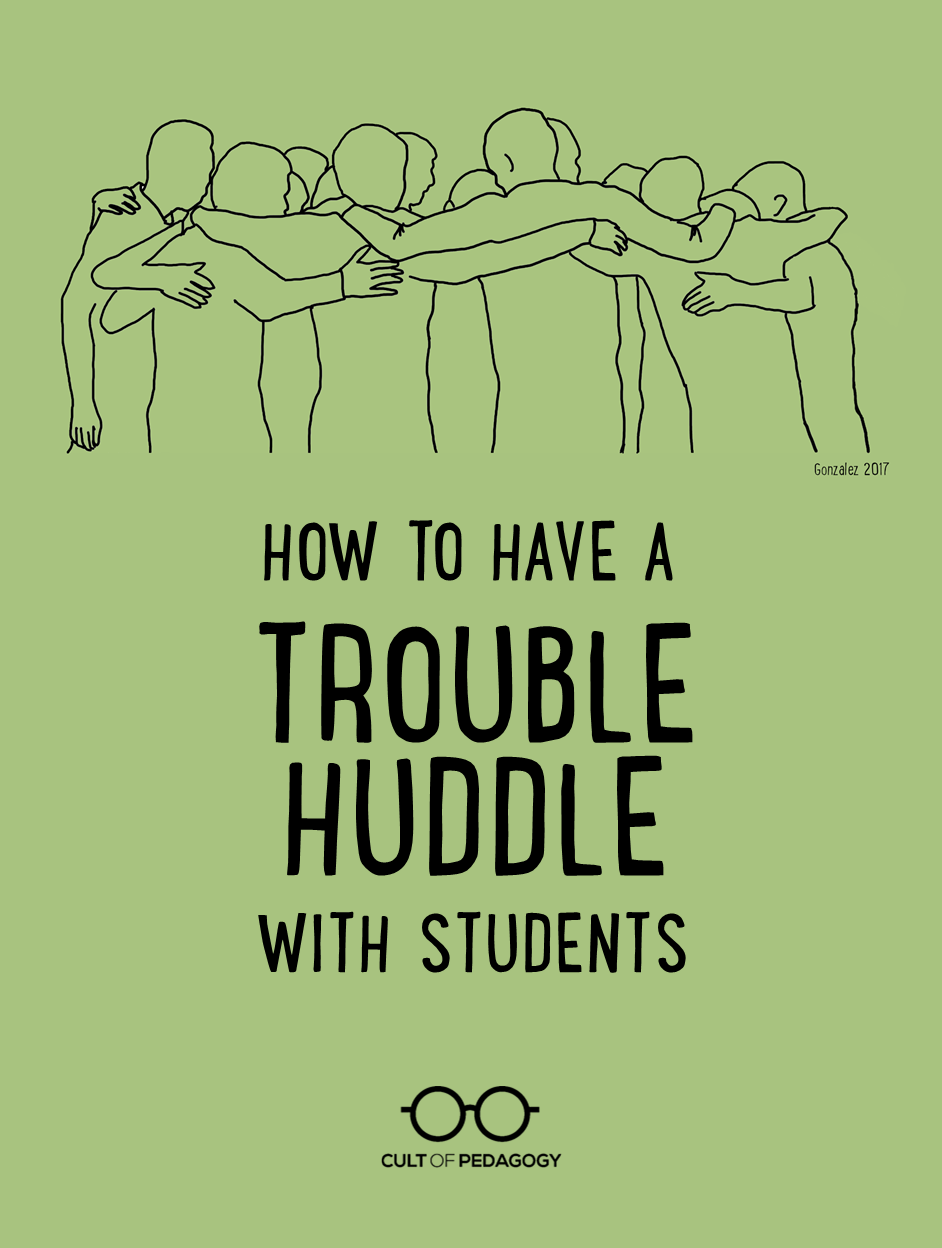
I have admired Sherri Spelic’s work for years now and am thrilled to welcome her as a new contributor to Cult of Pedagogy. Be sure to check out her personal blog, Edified Listener, and the collaborative blog where she serves as editor, Identity, Education, and Power.
Once upon a time in the gym, I was busy setting up cones and markers for an exciting game I was going to introduce to my waiting first graders. They became loud and boisterous. I asked them to settle down for one minute more while I finished my preparations. They balked and stayed loud. I went over to them and asked this question:
“Boys and girls, what is it that you want me to understand with all this noise?”
“We want to play,” said one student.
“We want to have fun,” said another.
“And I’m keeping you from doing that, right?”
Several heads nodded.
I remember the conversation so clearly because at the time the question was a new one for me. Rather than shut things down, it opened up a genuine conversation. My students told me exactly what they needed and wanted. What we did after that was in direct response to their immediate needs. We experienced a brief but effective troubleshooting huddle—“Trouble Huddle” for short.
What is a Trouble Huddle?
Sometimes when we are in the midst of teaching, we can lose sight of what’s going on with our students even when we’re looking right at them. Armed with our carefully crafted lesson plans, skill rubrics, tech tools and a growth mindset to beat the band, we can often teach right past our students: delivering the content, yet missing the learning.
In my own elementary physical education classes, it is my students who consistently remind me that the content (skills, patterns, understandings) is not what they are there for, per se. Rather, they are there to have fun, be with their friends, and learn to do some things in the process. Understanding this helps me see my students more fully and also tap into their rich capacities for insight and discovery. One way I do this is with a trouble huddle.
With a trouble huddle, I allow my best laid plans to veer off the rails, stop the activity, and ask “What’s going on here? What seems to be the problem?” Some students are always quick to answer, usually to lay blame at a classmate’s feet. On occasion, I find that these moments can be wonderful teaching opportunities. As students offer their perspectives on what the difficulty is and how it might be overcome, we open the door to problem solving as a group.
A Sample Huddle
My students frequently run into difficulty when it comes time to create teams for a game. I provide some general parameters for the groups: they need to be co-ed, as evenly numbered as possible, and balanced in terms of skill and enthusiasm. If the process takes more than one or two minutes, I often call them in and ask, “What’s the problem?”
“The teams aren’t fair!”
“That team has all the good soccer players.”
I usually scan the group to look for signs of agreement among students.
Returning the issue to the members who raised concerns, I say, “What seems to be getting in the way of making fairer teams?” This question is useful because it helps students look for visible barriers.
It only requires one or two brave souls willing to share their observations: “Some people only want to be with their friends.”
“So what could be done to create fairer teams?”
Responses from students typically suggest how members might be switched between groups. Often, the players regarded as weakest may be directed to move to one team or another. Then I may ask, “Did ____ ask to move?”
Not surprisingly, the answer is usually “No.”
I may remind the group of a maxim they have heard many times previously: “Before you send someone else to do the thing that you don’t want to do, you go yourself. That’s being responsible.”
By this time, some students will inevitably ask if I will simply make the teams. “Sure, I could make the teams,” I say, “but what would you be learning?” and “Who’s playing the game, you or me?”
In the course of this conversation, not all students are equally engaged. Restlessness can spread quickly. Students often remind each other (loudly) that their actual goal is to play a game. The concrete problem-solving likely requires less than 30 seconds; I recommend timing them, if possible.
Then the games can begin.
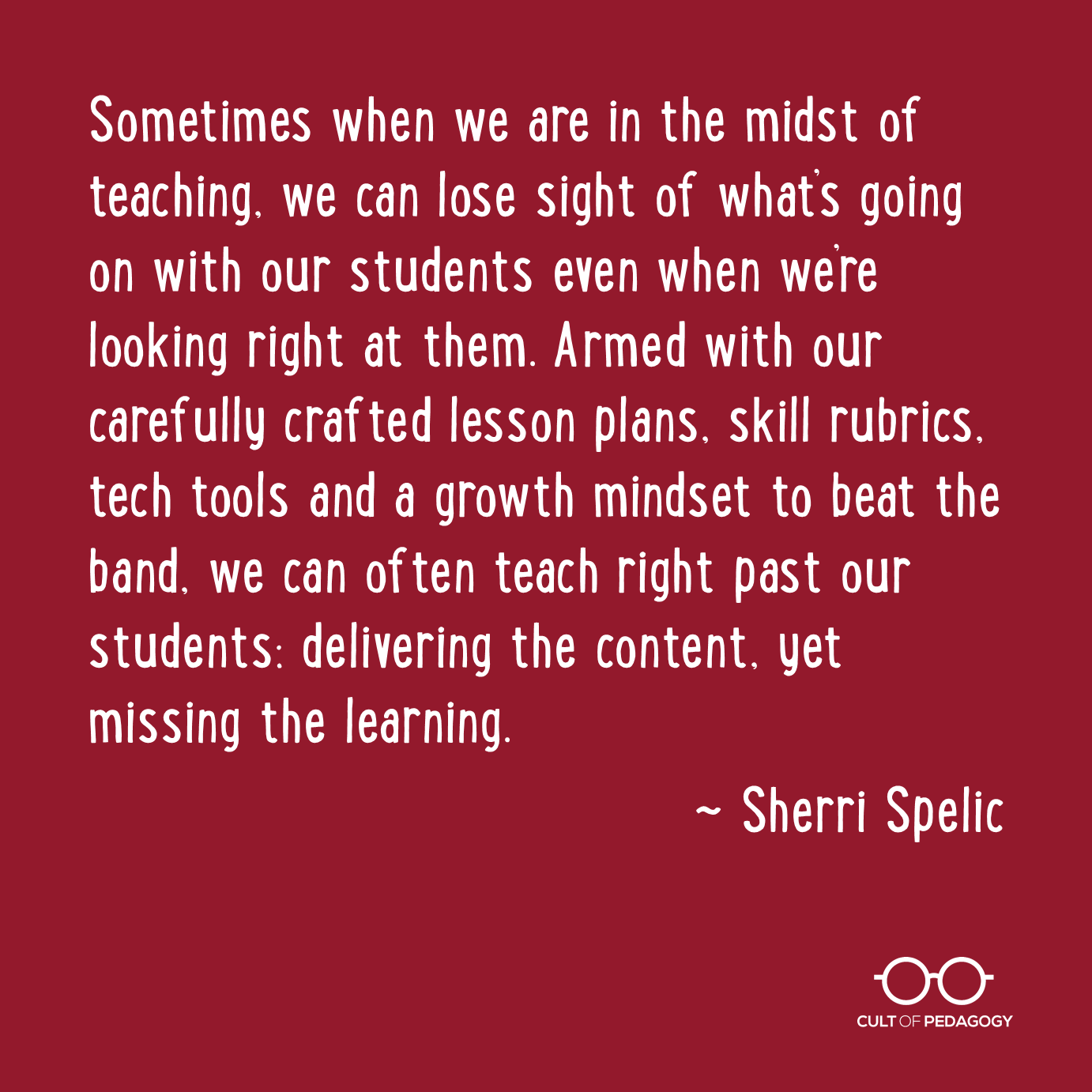
Making It Work
In order for such conversations to be a success, I’ve found a few things to be particularly helpful:
- I like to deepen my questions to students about “what’s going on” by asking specifically what they observed and how it made them feel. This allows students to identify concrete behaviors and actions for us to consider when working towards solutions.
- My role is primarily to moderate the discussion, not to fix the problem.
- I listen and then paraphrase student responses. When I paraphrase what a student has said, it can serve both as a comprehension tool for group members as well as an affirmation for the speaker that their words have been heard and valued.
- I draw the group’s attention to our process by sharing what I notice about who is speaking and who is remaining quiet, which themes seem most important and for whom, or which feelings are coming up as we talk.
- When aiming for solution building, I ask students about their goals for the activity. This is crucial for achieving an outcome they can and will work with. As I frequently ask, “Who is playing the game? What kind of game do you want to have?” Group ownership of any solution makes a world of difference.
- In approaching these conversations it’s important to stay aware of how each unique group is able to respond to this kind of challenge. Keep it brief and concrete for younger grades and hold students accountable for respecting established group norms (i.e., raising hands to speak, listening without interrupting).
Worth the Time
Trouble Huddles may not be for daily use, but they are possible at every grade level. All school children are capable of reflection and many will surprise you with their insights and sensitivity when they are given a nurturing forum to do so. As I help guide the discussion, I have a unique opportunity to model the behaviors that lend themselves to positive group outcomes. I listen carefully, paraphrase regularly, invite hesitant speakers and welcome students’ questions. For younger students I may act out the behaviors we’re discussing in exaggerated form to help them see where the difficulties lie. We may laugh a bit then.
In the process I learn so much more about my students and how they think about things. Our troubleshooting conversations remind us that there is always more going on than just the activity itself. In many cases, I can hold up a mirror for the class members to see some of their behaviors and the effects they are having on others. At other times, I can acknowledge my own role in adding to or mitigating confusion.
Trouble huddles can eat up time, cost some extra emotional energy and resist advance planning. Done well, however, they can open up a world of learning possibilities for students and teachers alike. ♦
Join my mailing list and get weekly tips, tools, and inspiration—in quick, bite-sized packages—all geared toward making your teaching more effective and fun. You’ll also get access to my members-only library of free downloadable resources, including my e-booklet, 20 Ways to Cut Your Grading Time in Half, which has helped thousands of teachers spend less time grading!


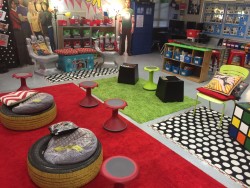
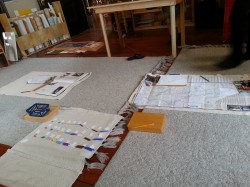
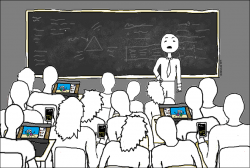
How can I use this strategy during instruction time in the classroom? My 3rd graders are extremely disrespectful and rude to all teachers (not just me) and classmates, frequently disruptive and off task (most are extremely below level hence have a low frustration tolerance), argumentative, and unruly. I am a first year teacher with no mentor and a failing school with zero support. I sometimes think my kids have never had a conversation about things which is why they argue so much… lack of home support for respect also is a big issue. I frequently resort to an authoritative approach (I am the teacher so do it) because I’m at a complete loss. I wish I could see this being modeled. I need help so badly!!!!!!!!
Adi,
I hear your pain and I empathize. You need help from real people in your proximity and that doesn’t appear to be forthcoming. This tool assumes functioning respectful relationships between teachers and students as well as among students. I hesitate to dole out advice as if I had the answers to your troubles. I don’t. It’s never too late or the wrong time to invest in relationship building, however. What can you do tomorrow to build trust in your classroom?
If you’ve found your way to this site, you are certainly in the right neighborhood for support. Definitely check out resources on here related to classroom management and growing empathy among students.
Again, I have no silver bullets but deep listening is a powerful tool. Model it as often as you can and praise it in your students whenever they show it. Ask them about themselves and prepare to listen without interrupting. Perhaps start with one-on-one conversations. I’m sorry that you are having what sounds like a rather unforgiving start to your teaching career. Keep asking for help. Keep reaching out.
ADI, I’m a first year teacher too. Here students are also disrespectful, as you said, it comes from home where they are not taught respect and empathy towards others. They are also rude to teachers and it’s disappointing. While teaching the content and skills, we have to deal with the issues that parents should care about. So, it’s a double task. I would like to have a mentor, but I don’t have. We need to know really efficient and working tips. Thanks for this article.
Adi,
This is actually an important component of a popular behavior management strategy called “Restorative Practice.” I haven’t received formal training in Restorative Practices, but several of my colleagues have, and so I’ve been experimenting dialogue circles when I feel the need arise. Here’s the structure I’ve been using:
1. Have a talking piece
2. Review non-negotiables. (Listen with an open mind, say only what you need to say so that everyone can have time to speak, no names, and no side conversations or inside jokes.)
3. First question: Softball/easy. EVERYONE answers. (I do allow kids to pass if they wish.)
4. Big questions: Ask about the root of the problem. Popcorn answers. (Encourage students to pass to others who haven’t shared yet/much.)
5. Last question: End on a high note – how can WE (not “I”) make this better? Popcorn or everyone answers.
(As we dig in, I always ask their permission to take notes on their ideas about problems and solutions – they really respond thoughtfully when they know you’re hearing them.)
The goal is to FACILITATE discussion in which students hold EACH OTHER accountable for their behaviors.
For example, I hosted a writing celebration two days before vacation which involved snacks. It seemed that as soon as food was involved, the gloves were off. Students were stuffing their faces, without permission, before I’d even finished putting food out. Seventh-grade boys were egging each other on to “pound” their cans of iced tea, and one made himself a disgusting tower of desserts which he proceeded to compress and jam into his mouth.
I blew a gasket.
I never yell at my students, but here I was, trying to do something nice for them, and they were acting like a bunch of ungrateful animals while other students politely waited their turn. I sent the frat boys to the back of the line and threatened to send another student to the dean’s office. I railed. I lectured. I stewed while they silently collected their treats.
The next day, we “circled up” for a class discussion. I reminded them of the non-negotiable rules, and we used my son’s bouncy ball as a talking piece.
I started with the softball question that everyone had to answer, “What’s one thing you’re looking forward to over vacation?” Then, I moved to the real heart of the discussion, which we answer “popcorn-style” (answer only if/when you want to). “Why did I get so mad yesterday?” I asked. Students were able to nail the behaviors immediately. When they finished, I asked, “How can eating together be a good thing? If you have family meals, what do you get out of eating together at home?” They talked about spending time together, time away from TV and phones, feeling close. I asked if their family dinners look like yesterday’s celebration. The answer was a distinct, “No.” So I asked, “Why is it different at school?” One student, a friend of the kids who were rude the day before, really nailed it: “I think some people think they can do whatever they want because their parents aren’t around.” He wouldn’t make eye contact with anyone, but he found the courage to say it. Finally, I closed by asking, “Would you like to have a celebration again? If so, what can we do to make it better?”
Stick to your non-negotiables. Sometimes my circles aren’t perfect, sometimes the discussion turns away from my intended questions, but I’m fine with that. They own the discussion, I just enforce the rules with zero tolerance for disrespect during discussions. Rarely, a student has to listen from the sidelines, but they still listen. 🙂
This isn’t my circle, but here’s what it can look like: https://www.youtube.com/watch?v=qTr4v0eYigM
Good luck!
Brittany
Brittany, thank you so much for sharing all of this. Much appreciated!
What do you do with an admin that will not allow you to veer off the lesson plans?
Hi Heather,
Good question. Without knowing the particulars of your situation, I think the case can be made to any administrator that precisely the reason you are trying a trouble huddle is so that you can actually continue the lesson plan. Few administrative policies take into account the thousands of micro and macro decisions each teacher needs to make throughout a school day and school year to insure not only that students learn but that they remain safe, feel cared for and supported in the process. Since no plan is fool proof or a guaranteed success, it should come as no surprise to an administrator who aims to serve as an instructional leader that a lesson can go wrong and require a correction. In this way I think you can always argue for the trouble huddle as a means to improve student learning precisely when the lesson plans are not delivering the desired results.
I hope that helps. Good luck!
ADI,
I feel you.
Commenter-I feel your pain. I am in the same situation as you, and I would love to see this modeled. I try to do it, but usually the kids resort to yelling bc that is what they do at home. This is my third yr at a very challenging school, and I have not figured out how to get students to be respectful.
I’m sorry to hear of the troubles you’re having. First year teaching is tough. This post is great and I highly recommend the book Love and Logic in the classroom. Let me know if you want my email.
I had to respond to your cry for help. I am shocked that you are a first-year teacher without a mentor or support. This is the reason so many young teachers choose to drop out of the profession. In my state, every first-year teacher must have a mentor, by law. Check to see if your state has the same mandate. However, that won’t help you right now. I am also a third-grade teacher and urge you to seek out Responsive Classroom. One of their tenants is to model, model, and then model some more, every routine in your classroom including how to treat each other. You almost have to set the clock back to Day One. It will be worth the time and effort. Good luck and hang in there!
Responsive Classroom book The First Six Weeks of School, is a great way to develop a community if positive behaviours. Students have to have ownership of what the community allows and consequeses. I does take patience and time, but so worth it. Check out the book and the Responsive Classroom web site. I taught inner city, fifth grade, for 26 years and loved it.
Good luck and check it out.
This trouble huddle in a PE class, might take the form of class meetings in a regular classroom. This concept turned my class around as a new teacher. I encourage you to read the book Positive Discipline in the Classroom and begin regular class meetings in your classroom where students learn to give compliments, appreciating, and apologies, and where problems can be dealt with by the whole class in a productive manner. You can find lots of suggestions online for how to run class meetings using the Positive Discipline in the classroom method.
I wish there were an easy like to print this, sometimes my computer at home doesn’t cooperate as easily…any chance you’d add a print article feature?
I had a button for this, but had to disable it because it was interfering with the security of the website. We’re working on it! My best advice would be to highlight the article, copy the text, then paste it into a Google Doc or Word document. Sorry I don’t have a better option right now!